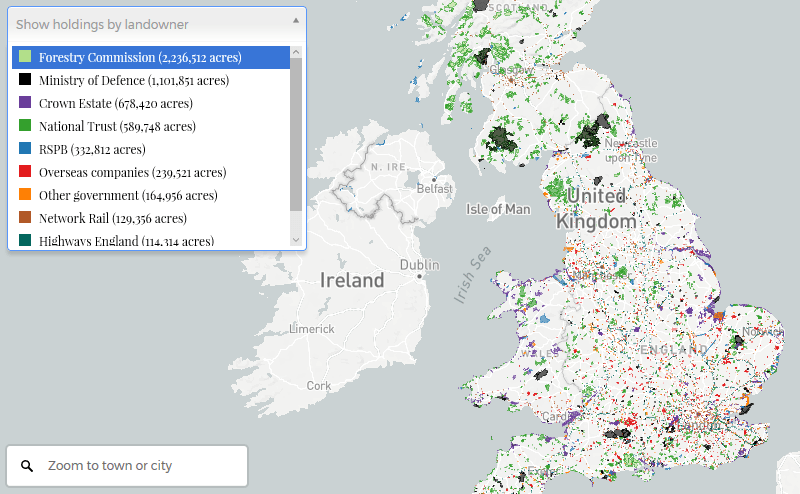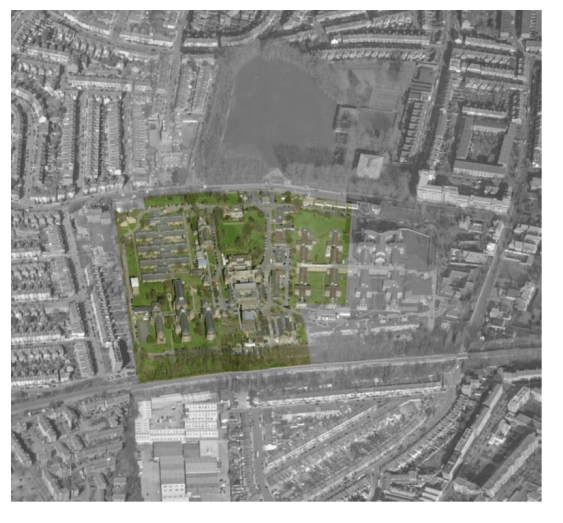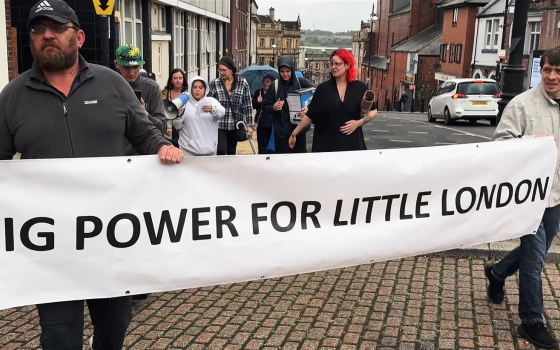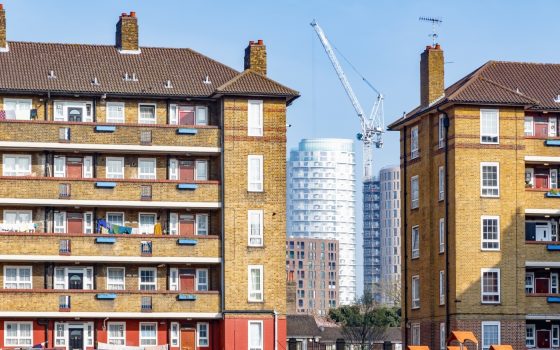Making the case for affordable housing on public land
We must use public land in the public interest.
31 July 2017
This article first appeared in TCPA and is reproduced here with permission.
The UK is in the grips of a housing affordability crisis. As we enter Brexit negotiations, with private developers uncertain about the future, many more people may find themselves priced out of decent, secure homes: just 3% of councils believe that Brexit will improve their ability to meet their local housing need in the short term, while 34% anticipate that Brexit will have a negative impact.
Despite these fears, the government is continuing its policy of selling off public land owned by government departments to stimulate the development of new private homes. Cash-strapped public authorities across the country are selling off land to plug budgetary gaps. Development land values are climbing by 15% over the last year in urban centres across the country, and consequently the temptation to sell off the silver to make ends meet is not limited to London and the South East.
Are we really achieving the best value for our land?
At the NEF we have been looking into whether selling off public land to the highest bidder the best way to plug budgets – or whether it is a false economy.
It is clear that we need a shift in focus to longer-term investment. Rather than prioritising the one-off sale value of a site, a focus on the best long-term value for land would achieve wider social benefits – meeting other public service needs such as health and social care, for example. Instead of selling land to developers and hoping for the best, working with long-term equity investors to directly fund affordable developments – whether public bodies, pension funds, or community-led projects – could be a smarter way to use our land. If the financial model is right, this approach would provide the key to unlocking the supply of more of the homes we need, without requiring us to sell off the valuable land underpinning it.
Maintaining the freehold of land in public or trust ownership and developing new affordable housing to rent and buy would allow councils and public authorities to generate an income stream over time. What’s more, if housing costs are set according to local incomes, the public purse overall stands to benefit. We have calculated that developing affordable rented housing on ten of the large public land sites currently up for sale could reduce the housing benefit bill by £231 million over the next 30 years.
Selling off sites is not producing the homes we need
So far the government’s plan to boost new housing supply through privatising land is dramatically failing to deliver in terms of quantity or quality.
The Department for Communities and Local Government reported in February that government departments have now identified 91% of the land needed to meet the target of 160,000 new homes by 2020 – 9% of which has already been sold. But as successive Public Accounts Committee reports have highlighted, home-building activity on the land sold has been alarmingly slow.
Our research shows that the ceding of control of land in this way could in fact be further fuelling the affordability crisis:
- Only one in five of the new homes forecast to be built on public land and sold off are likely to be classified as ‘affordable’.
- As little as 6% of new homes are likely to be social rented housing, and in some cases developments comprise only luxury properties.
The land release strategies of local councils are more varied. Over 250 councils have now joined the One Public Estate programme, intended to sell public land and property to the tune of £414 million by 2019, but others are bucking this trend and hanging on to their land to directly develop themselves. Around 35% of councils surveyed by the TCPA are now either directly delivering their own social and affordable housing or have set up joint ventures to do so on council-owned land.
This bold approach to keep land public and directly develop stands to benefit the wider public in the long term. A depleted land resource impedes future opportunities to carry out necessary infrastructure projects, or find sites in future for the expansion of public and community services. A recent report from the National Audit Office points to one such issue: the need to buy up high-value land for the development of new free schools, which is coming at significant cost to public funds. The Department of Education has been paying big sums through ‘complex commercial agreements […] to secure sites in the right places’, with 24 sites that have cost more than £10 million.
There is a clear tension between disposing of land to plug funding gaps and developing high-quality, genuinely and permanently affordable housing and other infrastructure.
Making land more affordable – and effective for meeting our housing needs.
Here at NEF we are carrying out three interlinked pieces of research to make the case for public land to be used in the public interest, with support from the Nationwide Foundation. We believe that public land should be used for good-quality and genuinely affordable housing – driven by what local communities need and want.
We’ve been meeting with community organisations, campaigners and residents groups across the country to find out what they care about – and have heard loud and clear that more local control over how land is used for new developments is essential.
In response, this autumn we will launch a land map of England pinpointing where public land is for sale and identifying developments on sites already sold, so that local groups can monitor activity and build alternative plans. This will build on the excellent mapping work carried out by campaigners Guy Shrubsole and Anna Powell-Smith, who are behind the ‘Who Owns England?’ project, and the new Land Explorer tool developed by Shared Assets – and will expose the mechanisms through which big private developers have an advantage when it comes to acquiring land. An understanding of the legislation to which the public sector is subject when selling land and other assets is key here.

Snapshot from the ‘Who Owns England?’ map, May 2017
Rules on reaching the ‘best consideration reasonably obtainable’ (sometimes shortened to ‘best value’) mean that a bidder able to offer the highest amount for land is most likely to win the contract. This puts plans that include more affordable homes at a disadvantage. And as the market does not ‘do’ mixed-tenure projects unless it has to, high-value housing developments led by the big housebuilders usually win out over those providing a higher portion of affordable homes.
But this doesn’t have to be the case. Interpretations of how the best consideration requirement applies to land vary – and the rules are notoriously murky.
There are regulatory and cultural differences between the treatment of public land owned by government departments and land owned by local authorities. For example, HM Treasury’s guidance on the use of the local authority assets states that ‘the ‘public sector holds financial, corporate and physical assets in the pursuit of policy objectives and not for its own sake or for the creation of profit. In pursuing policy objectives […] public sector assessment of value is based upon the interests of society as a whole and is not an assessment of value to the public sector alone.’
Since 2003 the Local Government Act has given councils powers to accept ‘less than best consideration’ of up to £2million below market value per transaction and £10million over a year. But despite the leeway, ‘the natural expectation that the Treasury expects councils to secure the largest cash receipt from the sale of land is deeply embedded in the culture of councils, the profession and indeed the public at large.’ The Housing White Paper has picked up on this ambiguity and invited further consultation on the rules.
Putting public land to public use through community partnerships
The best consideration requirement, whether it holds its authority thorough culture or law, presents a challenging environment for groups seeking to make the case for community-led and other affordable housing developments because they simply cannot be expected to compete on these terms.
There is no better case study for this than the StART Haringey project – a community land trust aiming to build 800 homes on a hospital site up for sale in North London, 75% of which will be genuinely affordable to local residents. The news that the developers planned to build just 450 homes on the public land – and only 14% classed as affordable – led to immediate local objections. In 2016 a campaign to develop a fairer scheme was initiated by a local group, which argues for a community-owned project that delivers a higher number of genuinely affordable homes and a range of wider social benefits that simply are not on the radar of the, expectedly profit-driven, private developers.

But without being able to compete on the same terms as the private developer – who can afford to offer a much higher purchasing price – the odds are stacked against the community. It is possible to make an economic case for community-led housing by highlighting its social and long-term benefits, and this is one of areas that we are working on improving, but a pound sign cannot easily be attached to social goods such as green spaces and increased health and wellbeing.
Some public authorities are open to collaboration with affordable housing providers at the expense of achieving best consideration for their land. Many have pointed out that NHS trust land, for example, is ideal for providing affordable homes for hospital staff and sheltered housing. But other departments are not taking this route. Depressingly, it seems that surplus Ministry of Defence properties are more likely to be converted into luxury holiday retreats than affordable homes for ex-service people.
How can our use of public land for new homes be improved?
Momentum for change is growing – there are a number of new levers, practices and policy proposals on the table that could greatly improve how we use our public land.
The last few years have seen the emergence of smart local land strategies to retain land in public ownership, such as Birmingham City Council’s small-sites plan and the Transport for London partnership to develop 400 sites in the capital. The Greater London Authority also has a small-sites scheme, set to launch this summer, that will bring together data, development standards and professional support to begin to rebalance the London land market in favour of small and medium-sized builders and community-led schemes.
Legislation around land use can be better understood and, where appropriate, challenged to ensure that public land is used to tackle the housing crisis. Councils, public bodies and residents must aim for long-term stewardship of public assets to ensure the wellbeing of their communities. Priorities might include:
- Ensuring that the One Public Estate agenda is improved to promote a joined-up strategy for public authorities to keep the freehold of sites in public or community ownership, or as a long-term equity stake which allows local authorities to ensure that any homes built are designed to meet the needs of local residents. This could mean setting up partnerships with community-led and other not-for-profit projects before land is listed as surplus.
- Clarifying ‘less than best consideration’ legislation and extending it to cover all public land sites, with an updated limit beyond £2 million to reflect rising land values.
- Promoting restricted-sale tenures on developments on public land that give occupiers full ownership rights but restrict the value at which they can sell their homes when they choose to do so. Such models have been pioneered by community land trusts and are useful for providing below-market home-ownership while ensuring that any discount or subsidy is preserved for future occupiers, rather than being captured by the lucky first beneficiary.
- Amending compulsory purchase legislation so that councils can acquire land at closer to its existing-use value, rather than future market value, and so provide more sites at a cost suitable for affordable housing. This could be achieved by ensuring that decisions take account of the full weight of planning policy compliance and are flexible on the profit entitlement for developers.
- Creating strong public mandates for better developments, made possible by the government’s commitment to open up and improve Land Registry data.
An important development to watch is how newly devolved regions such as Greater Manchester – as well as areas undergoing significant economic change, such as Margate – take efforts to avoid repeating the damaging effects of social displacement and homelessness that have resulted from highly unequal housing markets. Effective local and regional strategies for public land, as the foundation of long-term equity investment in the wellbeing of those places, must be part of the solution.
Campaigns Save public land
Topics Housing & land






